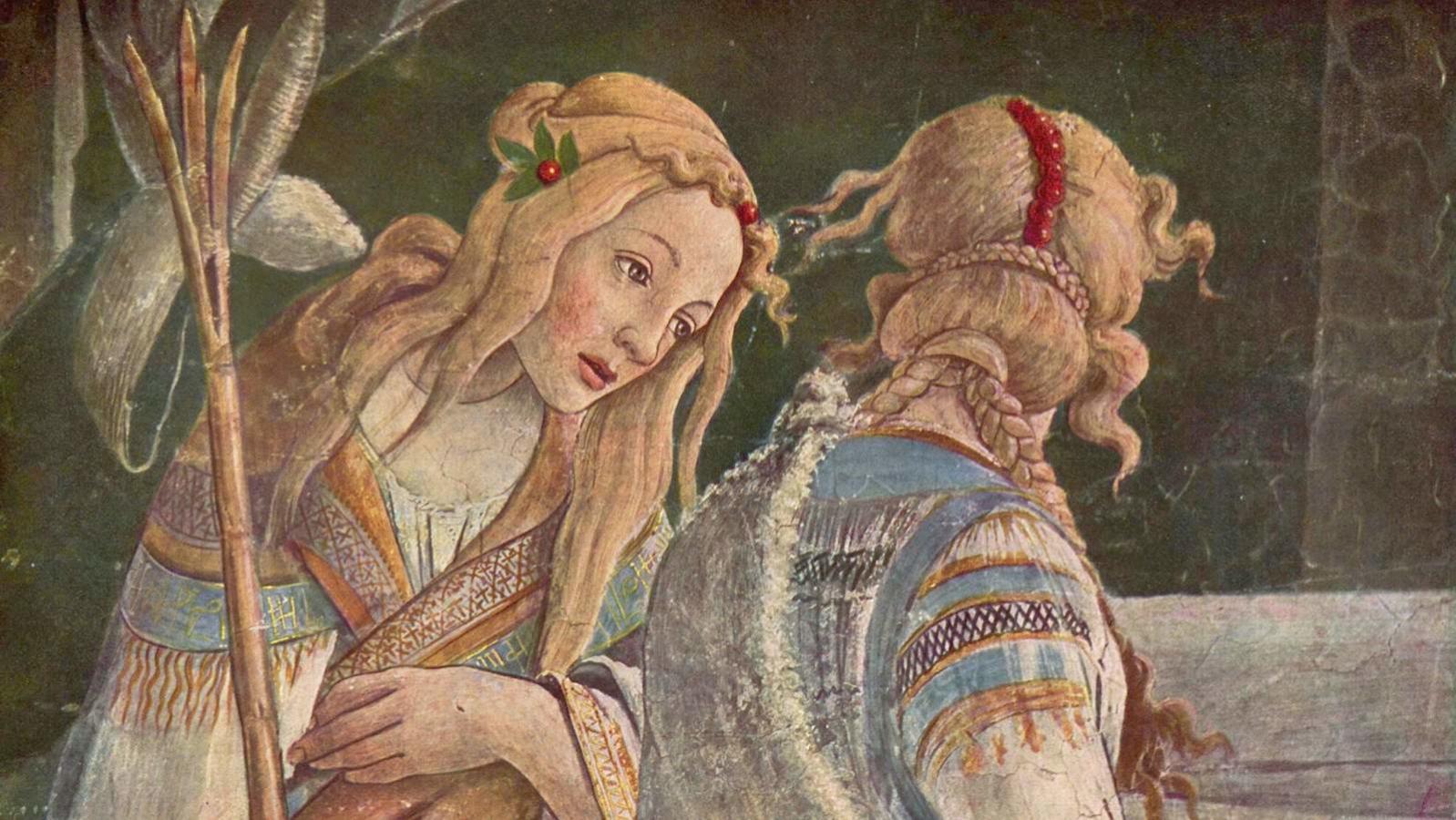The Hebrew Bible is a composite document containing a variety of types of literature, reflecting the attitudes and concerns of numerous authors writing in very different times and places.
An Early Example of Divergent Views
An example of such significant diversity as it applies to women is evident in the two creation stories placed at the beginning of Genesis. While the first account of the origin of human beings (Genesis 1:1‑2:3) recounts that both male and female were created simultaneously, in the divine image, and equally charged to multiply and to dominate the earth and their fellow creatures, the second narrative (Genesis 2:4ff.) preserves a tradition of male priority. Here, woman is a subsequent and secondary creation, formed from man’s body to fulfill male needs for companionship and progeny.
Such divergent understandings of female status and capacities, and the contradictions they engender, appear throughout the biblical literature.
Controlling Women’s Sexuality
Recent scholars have utilized a number of strategies to contextualize the diverse portrayals of women in biblical texts.
With your help, My Jewish Learning can provide endless opportunities for learning, connection and discovery.
Studying women’s status in biblical law, Tikva Frymer‑Kensky writes that biblical legislation, like ancient Near Eastern social policy in general, assumes a woman’s subordination to the dominant male in her life, whether father or husband. This man controls her sexuality, including the right to challenge with impunity both her virginity and her marital faithfulness (Deuteronomy 11:28‑29; Numbers 5:11‑31).
Indeed, legislative concerns about women’s sexual activity primarily have to do with relations between men. A man is executed for having intercourse with another’s wife (Leviticus 20:10), because he has committed a crime of theft against a man; but a man who seduces or rapes a virgin pays a brideprice to her father and marries her (Deuteronomy 22:28). This is not a crime in the same sense at all, not because of a dissimilarity in what the man did but because of the difference in who “owned” the right to the women’s sexuality.
Property Rights and Purity
Not surprisingly, in a patriarchal culture in which women function primarily as daughters, wives, and mothers of particular men, women have virtually no property rights. Unmarried women inherit from their fathers only if they have no brothers; and, in such cases, they must subsequently marry within their father’s clan to prevent the dispersal of tribal property among outsiders (Numbers 36:2‑12). [This was the case with the daughters of Zelophehad, who successfully petitioned Moses and God for their father’s inheritance.]
Widows do not inherit from their husbands at all, but are dependent on their sons or the generosity of other heirs. According to the practice of levirate marriage, childless widows are the legal responsibility of their husband’s oldest brother (Deuteronomy 25:5‑10).
Susan Niditch notes that the most noticeable laws of fencing off and boundary making vis-à-vis women are the priestly laws pertaining to purity. According to these regulations menstruating and postpartum women are unclean and sexually unavailable to their husbands for prescribed periods of times (Leviticus 12, 15), during which they also have the potential to render ritually impure people and objects around them. […]
Changes in Society Affected Attitudes Toward Women
Carol Meyers has applied insights gleaned from sociology, anthropology, and archaeology to reconstruct models of Israelite social life and the ordinary women’s place within it in various periods of biblical history.
She argues that when agricultural work and childbearing, two spheres in which women played an active role, were central to biblical society, social and religious life in ancient Israel was relatively egalitarian. When the political state and the monarchy emerged, and religious life was institutionalized in the Temple cult and priestly bureaucracy (beginning in the tenth century B.C.E.), however, women were increasingly excluded from the public arena and lost access to communal authority.
The negative images of wealthy and leisured urban women in Proverbs and some of the prophetic books may reflect this new reality, in which women’s traditional roles have been transformed and devalued. […]
Female Rituals, Female Deities
References to girls’ puberty rites (Judges 11:39‑40), harvest dances (Judges 21:20‑21), and childbirth rituals (Leviticus 12:6‑8) give fleeting illumination to exclusively female ceremonies that were not of interest to male biblical writers and editors.
A number of scholars additionally have discussed the persistence of goddess worship in ancient Israel and the particular place of the Near Eastern fertility goddess, Asherah.
While Frymer‑Kensky argues that biblical monotheism was generally successful in absorbing the central ideas of polytheism and the functions and roles of goddesses, she agrees that remnants of goddess worship remained. Jeremiah’s condemnations of worship practices involving “the Queen of Heaven” (Jeremiah 7:17‑18, 44:15‑25) and frequent archaeological discoveries of ancient Israelite female clay figurines, particularly prominent in the period of the monarchies, indicate that aspects of such worship may have lingered, if only as unconscious affirmations of the power of fertility that was seen as the reward of devotion to the invisible, transcendent God.
Niditch suggests that the female personification of Wisdom in Proverbs also preserves residual elements of female divinity. Although she serves as a divine emissary (Proverbs 1:29) and not a fully independent deity, Wisdom, God’s confidante and delight (Proverbs 8:30), is portrayed as having been created before the world and its inhabitants (Proverbs 8:22ff.) and functions as an essential intermediary to divine favor (Proverbs 8:35‑37).
As Niditch has written, “This goddess‑like figure in Proverbs directs her attention to male adherents, but also offers a source of identification and empowerment for women by suggesting that the female…can be a source of wisdom and life.”
Sexuality in the Bible
Although divine manifestations of female and male sexuality were major components of many ancient Near Eastern religious systems, the Bible treats sexuality essentially as a question of social control: “who with whom and in what circumstances.”
While a number of biblical narratives demonstrate the strength of sexual attraction and its potentially destructive consequences, only the Song of Songs preserves an idyllic vision of human sexuality beyond normal societal constraints and offers an established vocabulary of female‑male erotic love.
More typically, Proverbs warns young men to shun the snares of enticing and seductive women (Proverbs 5; 7; 31:2‑3). While acknowledging that sexual attraction and love underlie the powerful biblical metaphor of God and Israel as husband and wife, Frymer‑Kensky notes the absence in the Hebrew Bible of a considered discourse on the dynamics and implications of human sexuality.
She suggests that this vacuum was ultimately filled in Hellenistic/Rabbinic times by the Greek‑derived “antiwoman, anticarnal ideas that had such a large impact on the development of Western religion and civilization.”
Reprinted with permission of The Continuum International Publishing Group from The Encyclopedia of Judaism, edited by Jacob Neusner, Alan Avery-Peck, and William Scott Green.



